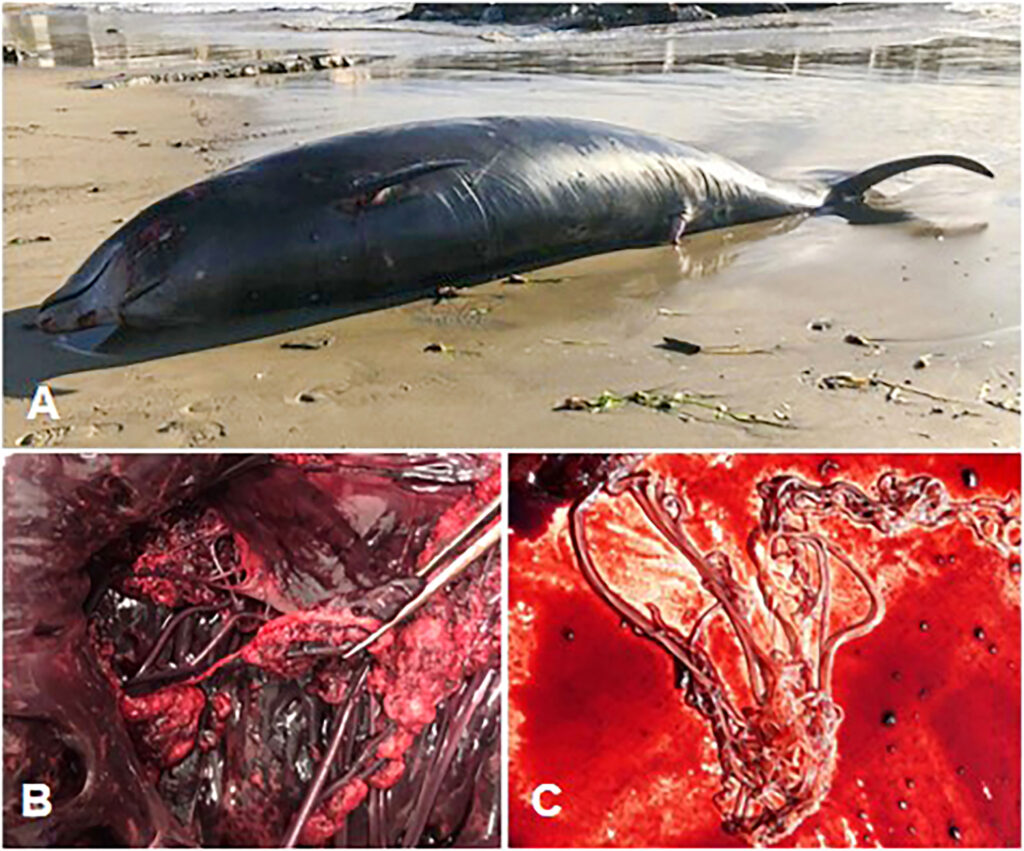Septicemia, a life-threatening bloodstream infection, can be caused by various pathogens, including Morganella morganii, a gram-negative bacterium. Morganella septicemia, though less common than sepsis caused by other pathogens, presents significant risks and requires prompt and effective treatment. This article delves into the causes, symptoms, diagnosis, and treatment options for Morganella septicemia, offering valuable insights into the disease’s management and prevention.

What is Morganella Septicemia?
Morganella septicemia is a severe and potentially fatal condition caused by the bacterium Morganella morganii, which enters the bloodstream and spreads throughout the body. Morganella morganii is part of the Enterobacteriaceae family, a group of bacteria that includes common pathogens like Escherichia coli and Klebsiella. While Morganella morganii is typically found in the human gastrointestinal tract, it can cause infections when it escapes into other parts of the body, including the bloodstream.
When Morganella morganii enters the bloodstream, it can trigger an immune response that leads to systemic inflammation, organ dysfunction, and, if left untreated, septic shock. Septicemia caused by Morganella morganii is most commonly seen in individuals with compromised immune systems, those with chronic conditions, or those undergoing invasive medical procedures such as catheterization.
Causes and Risk Factors of Morganella Septicemia
Morganella septicemia typically occurs when the bacteria enter the bloodstream, often due to one or more of the following factors:
- Hospital-acquired Infections (HAIs): Morganella septicemia is frequently associated with healthcare settings, especially in patients who are critically ill, have prolonged hospital stays, or require invasive devices such as urinary catheters or central venous catheters. These devices can introduce bacteria into the bloodstream, leading to infection.
- Immunocompromised Individuals: People with weakened immune systems due to conditions such as cancer, diabetes, HIV/AIDS, or those receiving immunosuppressive medications are at a higher risk of developing septicemia from opportunistic bacteria like Morganella morganii.
- Chronic Medical Conditions: Chronic diseases that affect organ function, particularly those related to the kidneys, liver, or heart, increase the risk of septicemia. Conditions such as cirrhosis, renal failure, or heart failure can impair the body’s ability to clear infections, making it easier for Morganella morganii to enter the bloodstream.
- Invasive Medical Procedures: Invasive procedures such as surgery, catheter insertion, or dialysis create a pathway for bacteria to enter the body. If proper sterile techniques are not followed, Morganella morganii can infiltrate the bloodstream, causing septicemia.
- Urinary Tract Infections (UTIs): Morganella morganii is a known pathogen in urinary tract infections. In severe cases, untreated UTIs can lead to the bacteria spreading from the urinary tract to the bloodstream, resulting in septicemia.
Symptoms of Morganella Septicemia
Septicemia symptoms can vary depending on the severity of the infection, but common signs include:
- Fever and Chills: One of the earliest signs of septicemia, fever and chills are part of the body’s immune response to infection.
- Rapid Heart Rate: As the infection spreads through the bloodstream, the body attempts to pump more blood to vital organs, leading to an elevated heart rate (tachycardia).
- Low Blood Pressure (Hypotension): Sepsis can cause blood vessels to dilate, leading to a significant drop in blood pressure. This may result in dizziness, lightheadedness, or fainting.
- Shortness of Breath: Difficulty breathing can occur due to the systemic inflammation caused by septicemia, which can affect lung function and oxygen delivery.
- Confusion or Disorientation: When septicemia affects the brain, it can cause mental confusion, disorientation, and, in severe cases, delirium or unconsciousness.
- Organ Dysfunction: As the infection progresses, multiple organ systems may be affected, leading to symptoms such as decreased urine output (renal failure), jaundice (liver dysfunction), or altered mental status (brain dysfunction).
Diagnosis of Morganella Septicemia
Diagnosing Morganella septicemia requires a combination of clinical examination, laboratory tests, and imaging studies. The process typically includes:
- Blood Cultures: The gold standard for diagnosing septicemia is blood culture, which involves taking a sample of blood to identify the specific bacteria responsible for the infection. This test can confirm the presence of Morganella morganii and help guide appropriate treatment.
- Antibiotic Sensitivity Testing: Once Morganella morganii is identified, antibiotic susceptibility testing is conducted to determine the most effective antibiotics for treating the infection. Given the potential for antibiotic resistance, this step is crucial for ensuring optimal treatment.
- Complete Blood Count (CBC): A CBC may reveal elevated white blood cell counts, which are indicative of infection. In sepsis, the CBC may also show abnormal levels of platelets and hemoglobin.
- Organ Function Tests: Blood tests to assess liver, kidney, and heart function can help determine the extent of organ involvement in septicemia. Tests may include liver function tests (LFTs), kidney function tests (creatinine and BUN), and cardiac biomarkers.
- Imaging Studies: In some cases, imaging studies like chest X-rays, ultrasounds, or CT scans may be used to identify any underlying sources of infection, such as an abscess or infected catheter.
Treatment Options for Morganella Septicemia
The treatment of Morganella septicemia involves a multi-faceted approach, with a primary focus on stabilizing the patient and eradicating the infection. Key components of treatment include:
1. Antibiotics
Antibiotics are the cornerstone of septicemia treatment. The choice of antibiotics is guided by the results of blood cultures and antibiotic sensitivity testing. Commonly used antibiotics for Morganella morganii infections include:
- Carbapenems: These broad-spectrum antibiotics, such as meropenem or imipenem, are often the drugs of choice for treating infections caused by Morganella morganii, especially in cases with resistance to other antibiotics.
- Fluoroquinolones: Ciprofloxacin and levofloxacin may be used to treat Morganella morganii infections if the strain is susceptible to these drugs.
- Beta-lactam/Beta-lactamase Inhibitors: Combinations such as amoxicillin-clavulanate can be effective in cases of mild to moderate infections.
2. Supportive Care
In addition to antibiotics, supportive care is vital for managing septicemia. This includes:
- Intravenous (IV) Fluids: IV fluids are administered to combat dehydration and hypotension, helping to restore blood pressure and improve circulation.
- Vasopressors: In severe cases of septicemia with low blood pressure, vasopressors such as norepinephrine may be used to constrict blood vessels and raise blood pressure.
- Oxygen Therapy: Supplemental oxygen may be provided to ensure adequate oxygenation of tissues and organs.
3. Surgical Intervention
If an abscess, infected catheter, or other localized source of infection is identified, surgical drainage or removal may be necessary. This is especially important when the source of the infection cannot be controlled with antibiotics alone.
Prevention of Morganella Septicemia
Preventing Morganella septicemia requires addressing the underlying risk factors and taking steps to reduce the chances of bacterial infection:
- Strict Infection Control Practices: In healthcare settings, maintaining proper hygiene, sterilization, and infection control protocols can prevent the introduction of Morganella morganii into the bloodstream.
- Proper Use of Medical Devices: Reducing the use of indwelling catheters and other invasive devices, or using them with proper sterile techniques, can significantly lower the risk of bloodstream infections.
- Prompt Treatment of Underlying Infections: Treating any urinary tract, gastrointestinal, or other infections caused by Morganella morganii promptly can help prevent the bacteria from spreading into the bloodstream.
- Vaccination: For individuals with weakened immune systems, vaccines for preventable infections may reduce the overall risk of sepsis.
Morganella septicemia, though less common, is a severe condition that requires immediate medical intervention. Understanding its causes, symptoms, diagnosis, and treatment options is crucial for effective management. Early detection, appropriate antibiotic therapy, and supportive care are key to improving outcomes for patients with Morganella septicemia. By taking proactive steps to reduce risk factors and following infection control practices, it is possible to prevent many of the complications associated with this potentially fatal infection.

